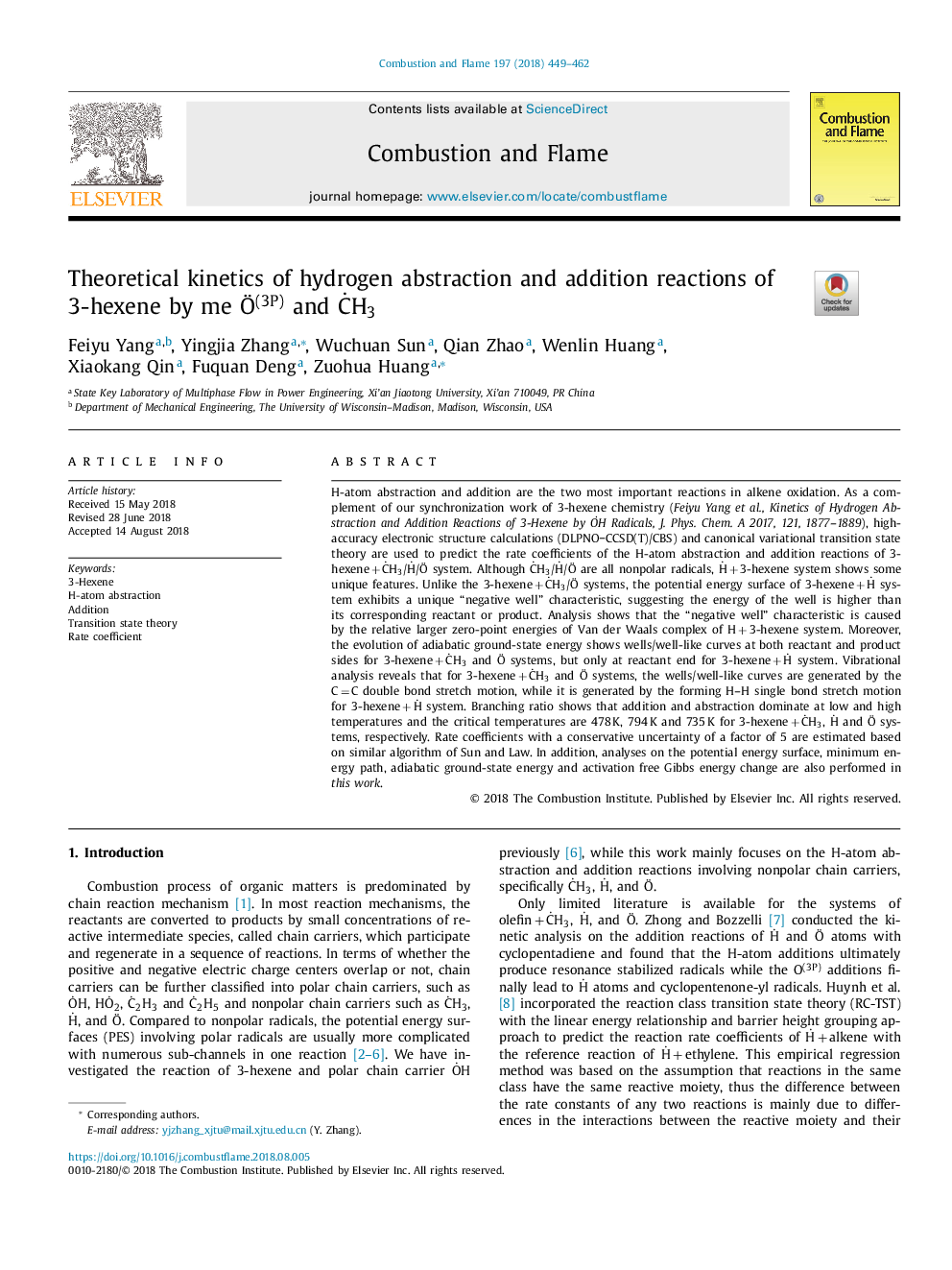| Article ID | Journal | Published Year | Pages | File Type |
|---|---|---|---|---|
| 11000316 | Combustion and Flame | 2018 | 14 Pages |
Abstract
H-atom abstraction and addition are the two most important reactions in alkene oxidation. As a complement of our synchronization work of 3-hexene chemistry (Feiyu Yang et al., Kinetics of Hydrogen ion and Addition Reactions of 3-Hexene by È®H Radicals, J. Phys. Chem. A 2017, 121, 1877-1889), high-accuracy electronic structure calculations (DLPNOCCSD(T)/CBS) and canonical variational transition state theory are used to predict the rate coefficients of the H-atom abstraction and addition reactions of 3-hexeneâ¯+â¯ÄH3/Ḣ/à system. Although ÄH3/Ḣ/à are all nonpolar radicals, Ḣâ¯+â¯3-hexene system shows some unique features. Unlike the 3-hexeneâ¯+â¯ÄH3/à systems, the potential energy surface of 3-hexeneâ¯+â¯á¸¢ system exhibits a unique “negative well” characteristic, suggesting the energy of the well is higher than its corresponding reactant or product. Analysis shows that the “negative well” characteristic is caused by the relative larger zero-point energies of Van der Waals complex of Hâ¯+â¯3-hexene system. Moreover, the evolution of adiabatic ground-state energy shows wells/well-like curves at both reactant and product sides for 3-hexeneâ¯+â¯ÄH3 and à systems, but only at reactant end for 3-hexeneâ¯+â¯á¸¢ system. Vibrational analysis reveals that for 3-hexeneâ¯+â¯ÄH3 and à systems, the wells/well-like curves are generated by the Câ¯=â¯C double bond stretch motion, while it is generated by the forming HH single bond stretch motion for 3-hexeneâ¯+â¯á¸¢ system. Branching ratio shows that addition and abstraction dominate at low and high temperatures and the critical temperatures are 478â¯K, 794â¯K and 735â¯K for 3-hexeneâ¯+â¯ÄH3, Ḣ and à systems, respectively. Rate coefficients with a conservative uncertainty of a factor of 5 are estimated based on similar algorithm of Sun and Law. In addition, analyses on the potential energy surface, minimum energy path, adiabatic ground-state energy and activation free Gibbs energy change are also performed in this work.
Related Topics
Physical Sciences and Engineering
Chemical Engineering
Chemical Engineering (General)
Authors
Yang Feiyu, Zhang Yingjia, Sun Wuchuan, Zhao Qian, Huang Wenlin, Qin Xiaokang, Deng Fuquan, Huang Zuohua,
